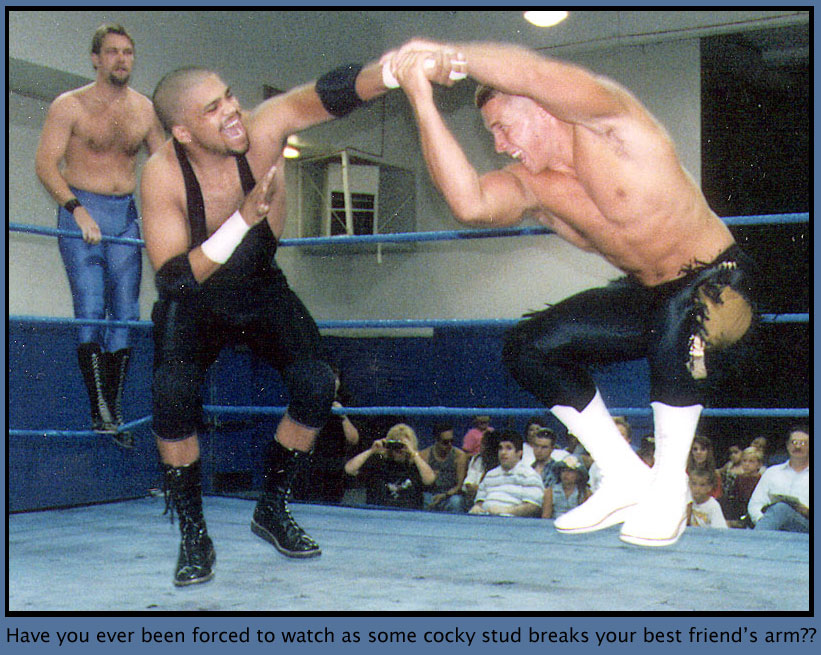
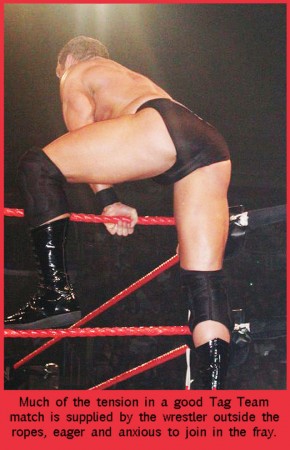 One of the most entertaining aspects of Tag Team wrestling is the behavior and reactions of the partner waiting outside the ring, watching his partner being brutalized just a few feet away but unable to assist him. I like when the camera pans over and gives us a glimpse of his impatience and eagerness. I like when he rests a boot on the ropes, or stands on the ropes, so eager to get involved. I like when he cries out in frustration to the referee: “Are you blind or something?? Do your job, ref!”
One of the most entertaining aspects of Tag Team wrestling is the behavior and reactions of the partner waiting outside the ring, watching his partner being brutalized just a few feet away but unable to assist him. I like when the camera pans over and gives us a glimpse of his impatience and eagerness. I like when he rests a boot on the ropes, or stands on the ropes, so eager to get involved. I like when he cries out in frustration to the referee: “Are you blind or something?? Do your job, ref!”
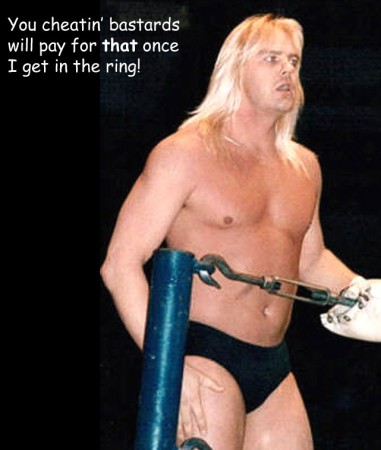 We’ve all seen this spectacle a million times — the outrage of the partner outside the ring is a theme in nearly every Tag Team match. Yet for some reason, we can’t get enough of it and feel cheated if they don’t frequently show us what he is thinking and feeling as he watches.
We’ve all seen this spectacle a million times — the outrage of the partner outside the ring is a theme in nearly every Tag Team match. Yet for some reason, we can’t get enough of it and feel cheated if they don’t frequently show us what he is thinking and feeling as he watches.
The Safe Partner, for lack of a better term, must remember to plaster a look of outrage and frustration on his face as he observes the Suffering Partner’s agony. He should appear to be on the verge of tears yet unable to look away, as if he’s watching a cute little fawn being torn to shreds by a pack of wolves.
He should look bloodthirsty, bent on revenge. He should look like he needs a hug and someone to reassure him that his partner is a big boy and can take care of himself.
I also like when the evil Tag Team, observing the Safe Partner’s frustration, begin to taunt him. They look him in the eye from across the ring, laughing at him as they ratchet up the punishment on his partner. “What are you gonna do about it?” they ask him with a smirk as they proceed to break his partner in two pieces. This usually drives the Safe Partner into a frenzy (he always falls for their schemes), sometimes inspiring him to rush into the ring where the ref quickly restrains him and forces him back out.
The Safe Partner’s helplessness and anxiety is meant to feed our helplessness and anxiety. The more shocked and disappointed he is about his partner’s suffering, the more shocked and disappointed we feel. Out in the audience, we are just as powerless to rescue the young hero as the man on the ring apron. He is blocked by the impenetrable ropes, and we are blocked by the barrier around the ring. All of us are so close, yet so far away, from stopping the relentless punishment and unfair double-teaming being inflicted on the poor hero. The anxiety of the Safe Partner adds a little extra seasoning to the pro wrestling recipe.
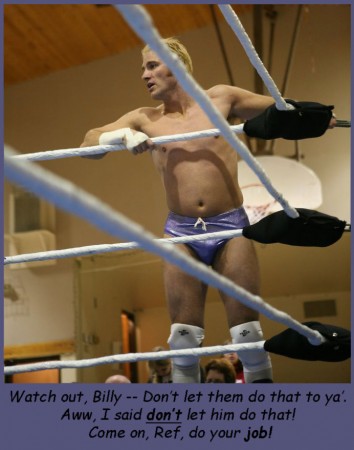 Clearly desperate for a tag, his whole body, his posture and tense muscles, should tell the story and enhance the audience’s interest in the match. He should portray a burning desire to get in the ring and rescue the Suffering Partner. His tension and impatience keeps us on the edge of our seats. If he claps in rhythm to inspire his partner, we clap in rhythm to help them out.
Clearly desperate for a tag, his whole body, his posture and tense muscles, should tell the story and enhance the audience’s interest in the match. He should portray a burning desire to get in the ring and rescue the Suffering Partner. His tension and impatience keeps us on the edge of our seats. If he claps in rhythm to inspire his partner, we clap in rhythm to help them out.
It’s even better when the Suffering Partner is his brother or, as mentioned in an earlier post, his twin brother. Blood is thicker than water, and to watch the brutal punishment of a family member is at least twice as maddening.
I wish they’d use a split screen when televising pro wrestling, the action in the ring shown side-by-side with a view of the Safe Partner and his endless bitching and worrying. Someone should invent that — I’d pay extra for it. If I ever do attend live wrestling matches, you better believe I try to find a vantage point behind the good team’s corner so I can watch the Suffering Partner and the Safe Partner at the same time.

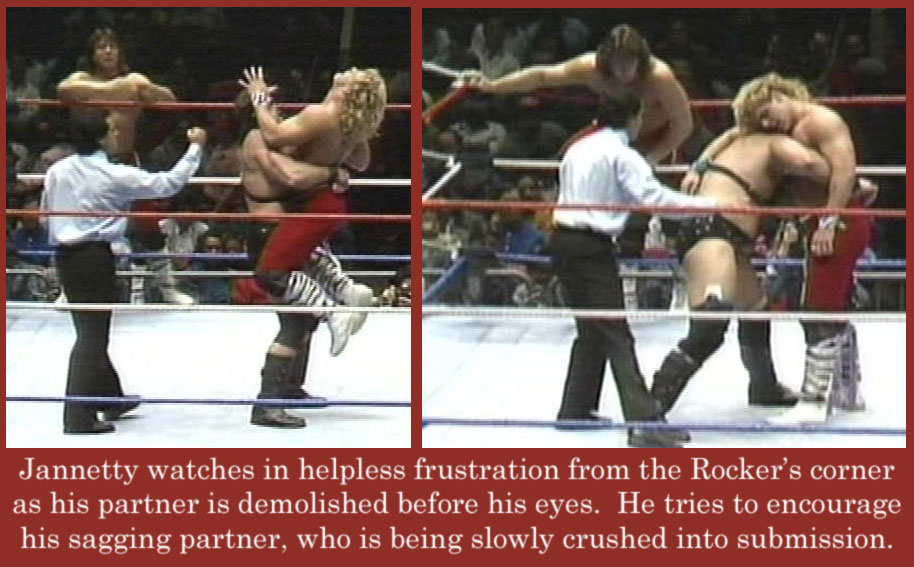
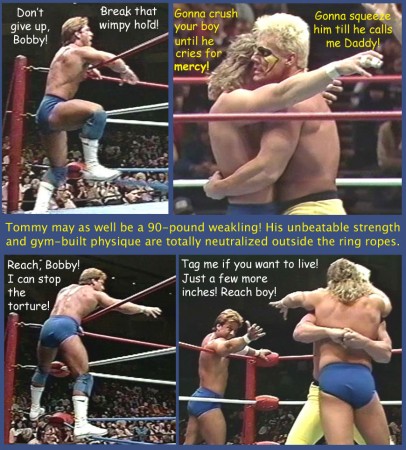
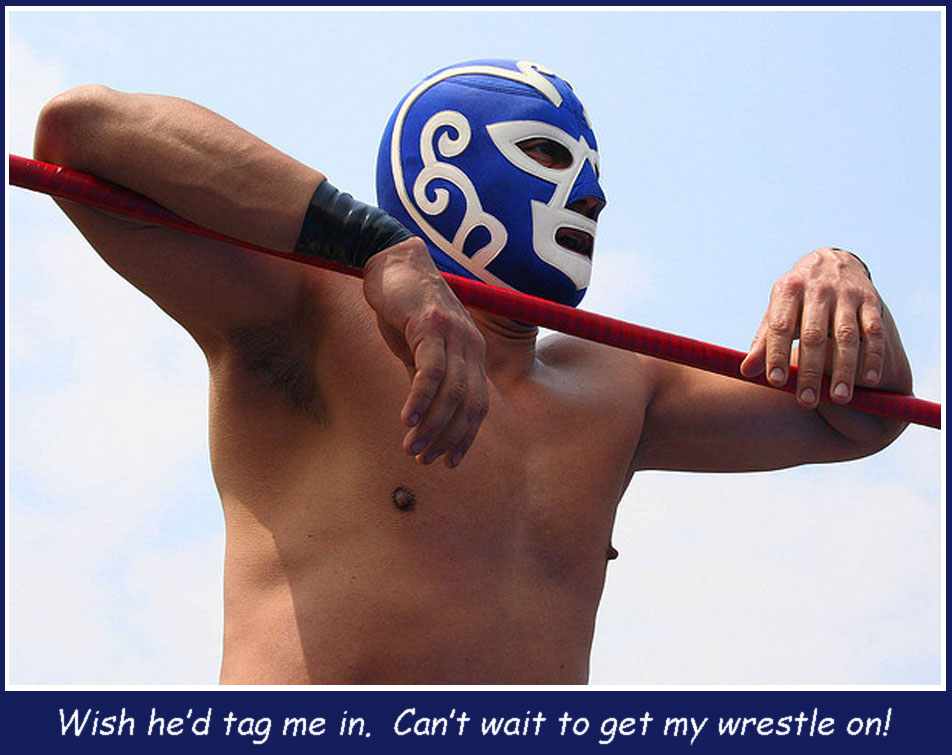
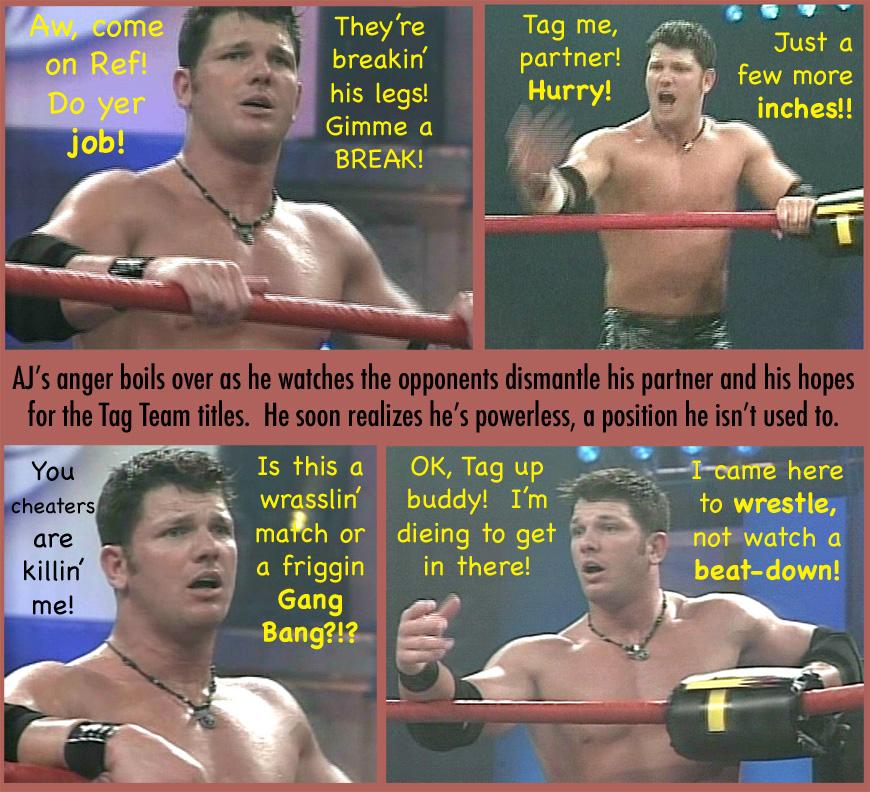
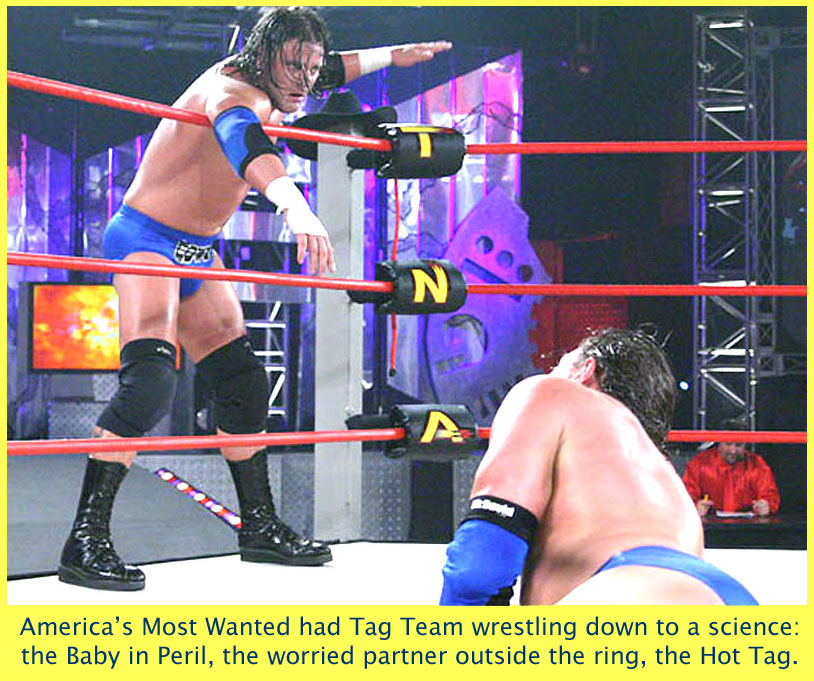
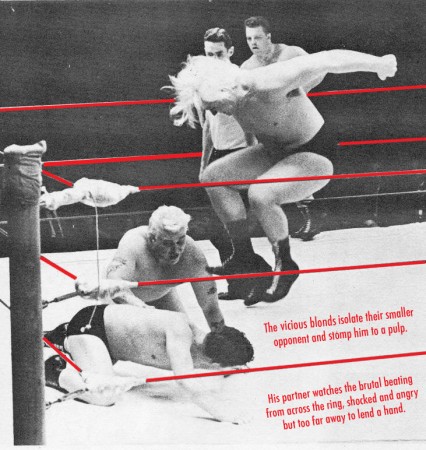
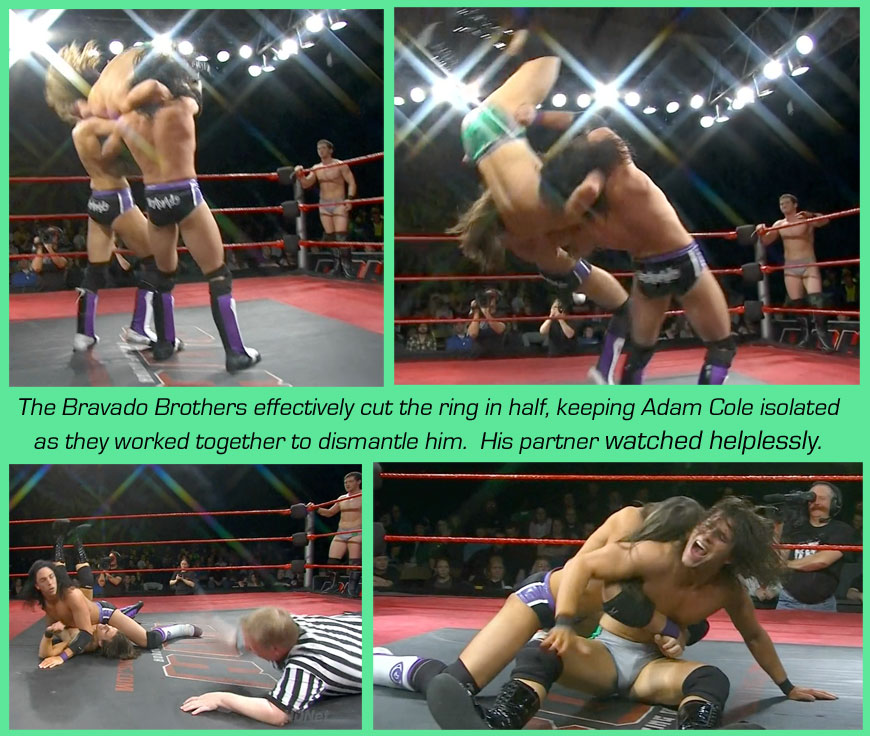
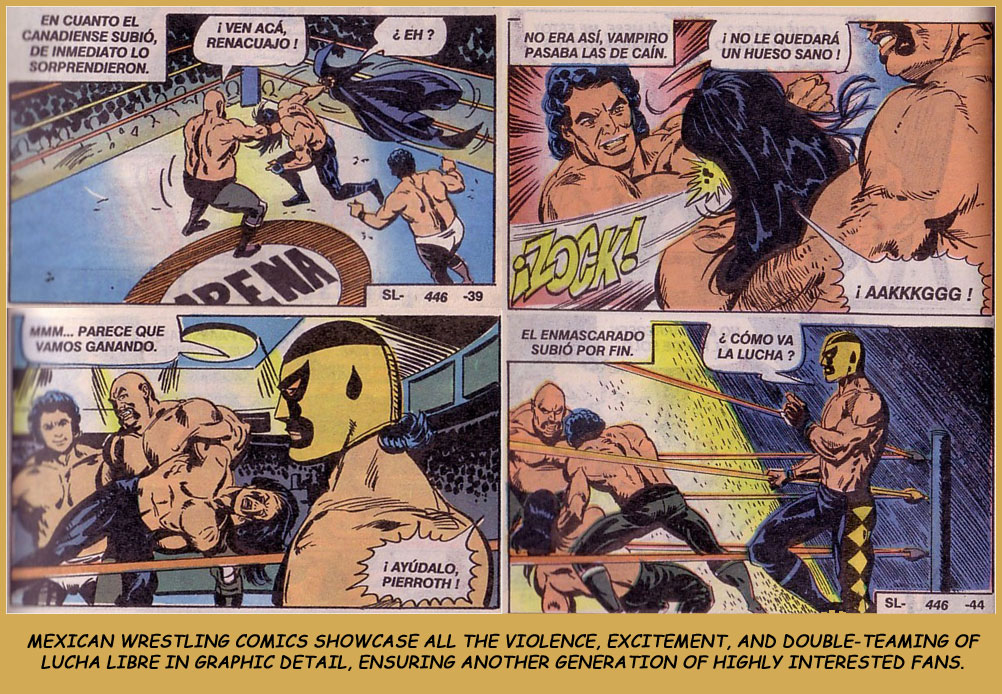
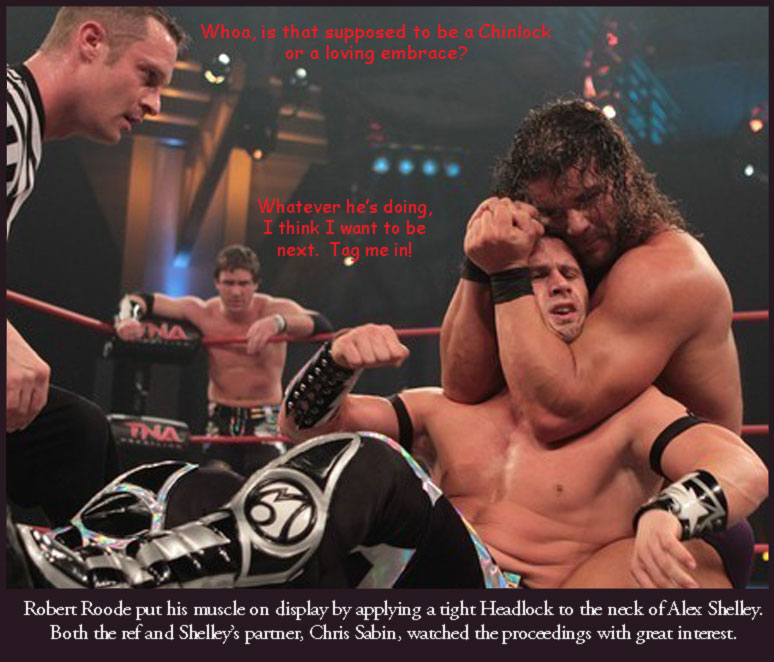
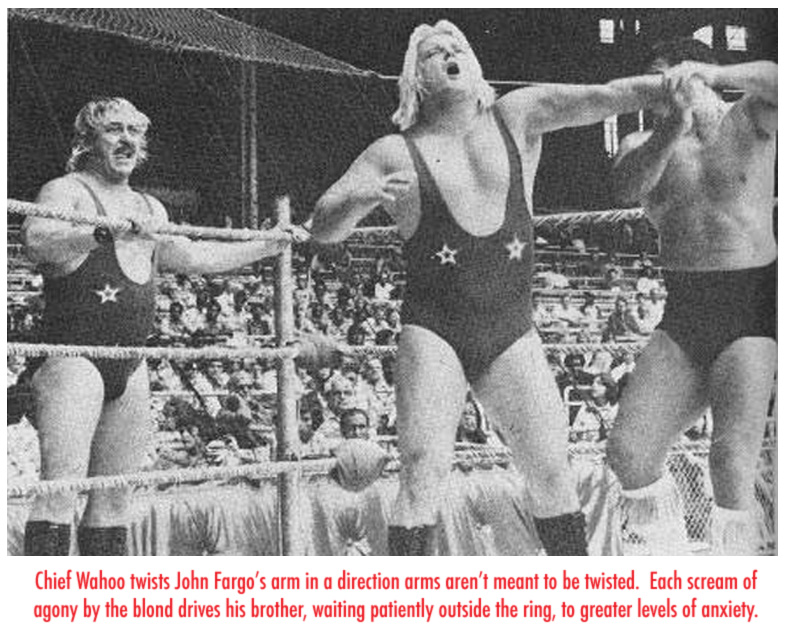
Excellent post on a neglected part of tag team wrestling. I love your take on the role of the “safe partner”: eye witness, worried guardian, frustrated hero. Of course I have seen every thing you’re talking about here, but never gave it a second thought. Now I will.